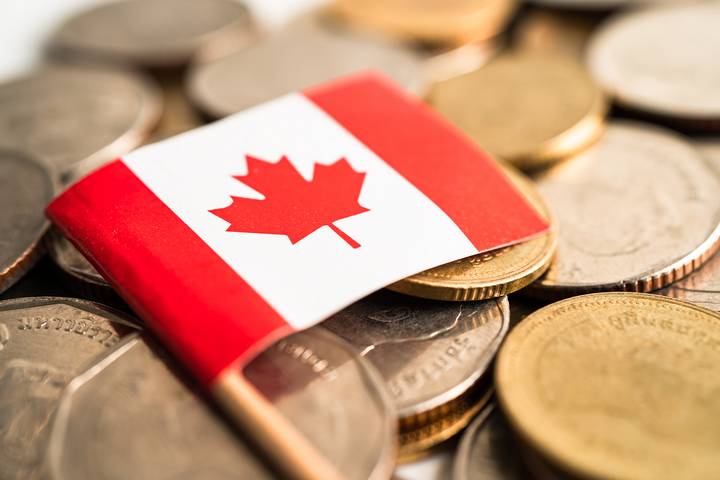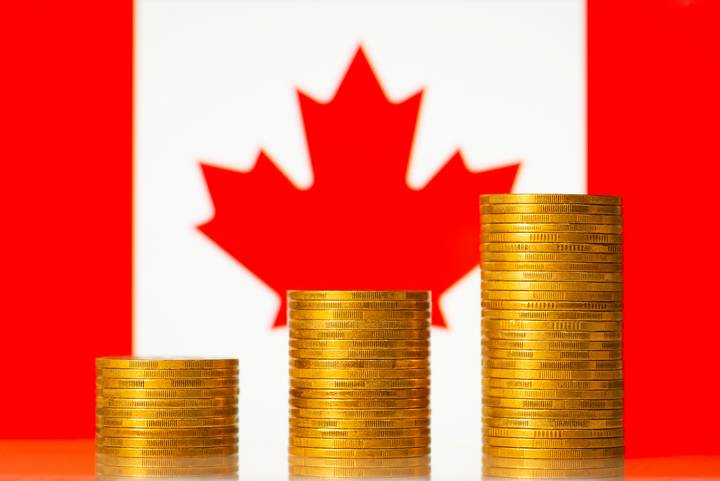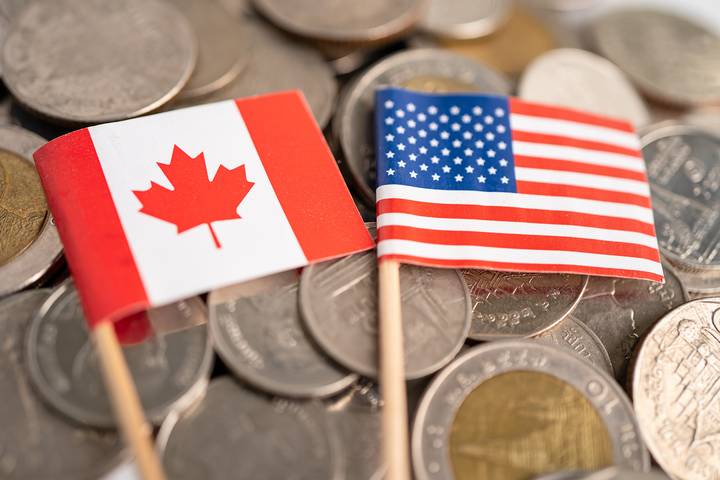
Best Low-Risk Investments Canada – 10 Safest Investments
Did you panic-sell in March? Did you FOMO-buy in May? Did you sit on the sidelines throughout this entire time? Whatever your investment strategy has been in recent months, you may be tempted to participate in this market. The Bank of Canada (BoC) has slashed interest rates to nearly zero, enticing many investors to join for the first time. Many risk-averse Canadians buy individual stocks or mutual funds, but they aren’t your only options. This best low-risk investments Canada list contains other safe choices.
Who knows what the heck is going on with this market? Nobody knows. One day, it is up 600 points. The next day, it is down 700 points. What should the average person do? Some might say that only fools think they can generate a high yield without any risk, but there are plenty of choices out there to achieve this goal. Index funds will survive, Hydro One will be around tomorrow, and the U.S. dollar is not losing its reserve status anytime soon. You can benefit in this market as long as you do not fall for the pumps and dumps and the unconventional plays brought to you by Robinhooders.
Here are the ten best low-risk investments in Canada:
10 Best Low-Risk Investments Canada
- Index Funds
- GIC Laddering
- Bond Funds
- Certificate of Deposit (CD)
- Dividend Stocks
- Mutual Funds
- Online TFSA
- U.S. Dollar
- Utility ETFs
- REITs
Safest Investments with High Returns
Index Funds

Index funds are the best low-risk investments in Canada. An index fund is a pre-packaged bundle of stocks that track a specific market section. You’ll notice that many index funds track the Standard & Poor’s 500 Index. This is a market-capitalization-weighted index of the 500 largest publicly-traded companies in the United States.
Index funds investments offer young adults who are just beginning to invest an easy opportunity to build an investment portfolio. They give you access to assistance from professionals and lower fees. You typically see lower fees with index funds since financial advisors do not actively monitor them.
An index fund can be a mutual fund or an exchange-traded fund (ETF) that follows major market indexes. You may find index funds on the Dow Jones Industrial Average, the Toronto Stock Exchange Composite Index, or the London FTSE 100. Sometimes, an index fund is known as an index tracker.
It could be easy to dismiss index funds as an investment strategy since their returns aren’t necessarily high. However, it is a long-term investment that will easily pad your portfolio. If you are not a good stock picker, why not invest in an actively-managed index fund?
GIC Laddering

A Guaranteed Investment Certificate (GIC) is an investment that offers a guaranteed rate of return over a specific period. A GIC is one of the safest investments to earn interest. Since GICs are secured, you don’t have to worry about losing your money.
This type of investment works by first establishing the amount of time you will leave your GIC in place. The maximum amount of time you can get for a GIC is five years. The longer the amount of time, the more interest you will earn. You then deposit money as often as you would like, earning interest. Once the term is up, you can take out the money, plus interest, for whatever you had in mind when you started the investment.
Guaranteed-investment certificates (GIC) are back in fashion for all types of investors. Again, interest rates are at historic lows, but GICs can still offer you a decent return with zero risks. You can always buy a GIC at a bank, but the best method is GIC laddering. What is this?
GIC laddering refers to buying GICs with increasing terms (one to five years), and each term will give you a slightly higher interest rate. It may not be the sexiest investment strategy. However, it works, allowing your money to work for you.
Bond Funds
Bonds are an agreement between an investor and the bond issuer to pay the investor a certain interest over a specific amount of time. Once the bond matures, the issuer repays the bond’s principal to the bondholder.
A bond fund contains numerous bonds, usually from a variety of issuers. There are a variety of different bond funds you can get. Some examples of issuers include the federal government as well as corporate issuers.
These types of bonds tend to be categorized by the type of bond in the fund. This includes the amount of risk, time, and the issuer. A bond is an important part of a well-rounded investment portfolio. Bonds are safe investments and become even safer once a part of a fund.
Certificate of Deposit (CD)
Certificates of deposits (CD) are locked-in investments for a longer time. Because of this, they earn higher interest than some other investments. The typical amount of time a certificate of deposit is locked in is three to five years, although you can get them for less or more time. Like many other investments, the longer you leave the money in place, the higher the return. You can transfer money into your certificate of deposit anytime you like.
Once your allotted time is complete, you can withdraw the money and the interest you have earned. Keep in mind that if you remove the funds earlier than stipulated, you may face a penalty. To take full advantage of the investment, make sure you are committed to leaving the money there for as long as you’ve decided.
Dividend Stocks
Many investors are trying to find the next to get the rich quick scheme in the financial market. This is evident in investors pouring money into bankrupt companies, like Hertz or J.C. Penney, pumping up COVID-19 stocks, such as Alpha Pro-Tech and iBio, and dumping their shares. Are lottery stocks the way to go? Hardly. For the average person, long-term investing is the best strategy, and the main facet of this tactic is dividends.
Whether concentrating your investments in the United States or Canada, you can locate various stocks that pay a commendable monthly or quarterly dividend. It is also important to select stocks that have been reliable in paying out dividends.
Unsure what to pick? Here are a few Canadian dividend-paying stocks to consider:
- Loblaw: $0.32 a quarter.
- Enbridge: $0.81 a quarter.
- Canadian Tire: $1 per quarter.
- Pizza Pizza: $0.06 per month.
- Restaurant Brands: $0.49 a quarter.
You will inevitably come across value stocks with dividends with more time and resources.
Mutual Funds
Eventually, set-it-and-forget investing will be back in style when society returns to normal. You will not have nearly as much time to watch Bloomberg or stare at stock tickers all day long.
Mutual funds are a decent alternative because you still have access to equities – at home and abroad – and a diverse array of other investment types, like bonds and bullion. Plus, mutual funds have a great performance record, and they come with little management fees.
Online TFSA
Do you want a better return on your capital without risking it in the financial arena? A tax-free savings account (TFSA) at an online bank would be one of the safest investments with high returns.
Many of these digital institutions offer higher-than-average interest rates because they do not have to deal with the costs of running a brick-and-mortar business. Therefore, they pass the savings to their customers through better rates and lower (or zero) fees.
U.S. Dollar

Let’s face it: Governments and central banks are flooding the economy with fiscal and monetary relief and stimulus. Will it be enough to sustain a recovery? The future is unknown, and the uncertainty is prevalent in the global financial markets as volatility has seemingly returned. You can always acquire U.S. dollars to protect your assets when in doubt.
You might be concerned about the Federal Reserve’s debasement of the greenback, but its purchasing power can remain superior based on market demand. During the market meltdown earlier this year, the U.S. dollar advanced nearly four percent because of massive demand for the traditional safe-haven asset. The buck became the best-performing currency before paring its gains due to the Fed pumping dollar liquidity into foreign markets.
The dollar is making a move again, and it will continue to be the haven of choice for global investors. It would also be a good idea to complement your dollar purchases with cryptocurrency, a promising investment for the future. Use the best crypto platform Canada to ensure your investments are secure.
Utility ETFs
Utility ETFs are among the safest investments with high returns. Whether you are investing during a bullish environment or buying and selling stocks during a market crash, one of the best investment decisions you will ever make is in utilities. While you can always invest directly in Enbridge and Hydro One, why not build positions in all of them simultaneously?
The easiest way to have exposure to utilities is to park your money in a utility-based ETF, such as the iShares S&P/TSX Capped Utilities Index ETF, which pays a monthly dividend of about seven cents per share. But there is plenty of utility ETF plays you can make in today’s global stock market.
REITs
REITs are excellent choices for safe investments. You are in luck if you have been staying away from real estate investment trusts (REITs) for the last couple of years because of how expensive they have been! The investment vehicle that involves a company that owns and operates income-producing real estate is a great way to build wealth.
REITs typically offer a hefty monthly dividend, and something like the Riocan Real Est Un (REI-UN-T) can award you about 12 cents per month a share. REITs might seem risky in the current economic landscape, but they are a long-term investment.
